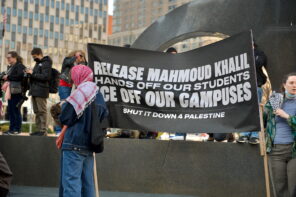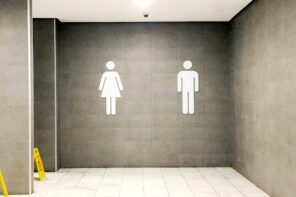The Southern Baptist Convention stole headlines from the Vatican this season when the nation’s largest Protestant denomination recently finalized the expulsion of two congregations for having women serve as pastors. One of the two is the mega Saddleback Church whose founder and longtime pastor Rick Warren, author of The Purpose Driven Life, supports women in roles of spiritual leadership. Backlash against women isn’t reserved for the Supreme Court. The Vatican ought to send the SBC a thank-you note for distracting attention from its actions, or lack thereof, regarding women.
Catholicism has neither an assembly to vote congregations out, nor any women in approved priestly leadership to expel. Parishes are simply closed by bishops, often related to bankruptcy proceedings to minimize payments to settle abuse cases. Moreover, while the SBC discriminates against women pastors, Roman Catholic women priests of various stripes are excommunicated upon ordination, so that’s that.
Meanwhile, the Catholics who remain keep mucking their way in what’s called a “synodal process,” a kind of worldwide, general conversation about church topics, including the sticky wickets of women’s ordination and LGBTQIA+ full participation. Local and continental consultations will culminate in a Synod of Bishops in October of 2023 and another session in October of 2024. Several hundred bishops and a few lay people will develop suggestions to “submit to the Holy Father,” (IL par.10) who, unsurprisingly, has the final say on what comes next.
In plain English, what’s called the Synod on Synodality, an infelicitous phrase if ever one were hatched, is an ecclesial effort that retrains sights on Rome as the locus of decision-making, albeit with flowery rhetoric about the Holy Spirit and some claim to local input. The process maintains a clear distinction between lay people and clerics, reinforces the myth that persons in religious congregations are not lay people, and leaves all the final decisions in papal hands.
Some people have found it a useful framework for raising important questions—notably some Germans who have progressive views and the money to make them stick. However, many bishops around the world took a pass on the whole thing. The Synod budget is minuscule if existent at all; apparently the Holy Spirit’s isn’t a union shop.
The Synod texts, including the recently released Instrumentum Laboris or “working instrument,” read as if written by committees, which they were. The IL isn’t a working draft to be refined by the end of the process. That would grant issues like women’s ordination to the diaconate and presbyterate, and the full rights (not only the recognition) of LGBTQIA+ persons subject to change. Rather, the Synod seems designed to simply acknowledge the hot-button issues, a minimalist result at best, with no clear mechanism and less promise to do anything about them. The exception proves the rule.
Cue the brass band to herald the papally approved decision to include 70 non-bishops, half of whom are to be women, as voting members of the Synod. This is the first substantive structural change for women in Roman Catholicism perhaps since Mary gave birth to Jesus. Leaders of many progressive groups understandably praised the move. There’s also a provision to change the usual number of 10 men from religious congregations who can vote in synods to five women religious and five men religious. Why they’re somehow in a different category than other lay people remains unclear, but this counts as progress.
Nathalie Becquart, a French woman and a member of the Congregation of Xavières, was named an undersecretary of the Synod of Bishops making her the first woman eligible to vote in a Synod of Bishops. This is in stark contrast to Vatican II when women were “auditors”—listeners without vote—a term which now has gone the way of all flesh. There’s undeniable progress in the metrics even if there’s no significant change in structure.
Oddly, the name “Synod of Bishops” is preserved despite the fact that other people are now voting. Apparently, there’s some Alice in Wonderland-reasoning involved (lest anyone suggest the bishops are not still in charge). Or maybe they plan to name those who vote as bishops. Doubtful. Or, maybe this is a one-off thing that opponents will be sure doesn’t happen again after Francis is out of the picture. What’s gained by such a misnomer remains obscure.
Despite the enthusiasm of many of my progressive colleagues, I’ve had an uneasy feeling about the whole synod process. Enthusiasm is a polite reinforcer, a way to encourage more such changes. But I fear praise may be a bit premature for living generations. Incrementalism in Catholicism is measured in centuries. Most of us live less than a hundred years. The damage to women and queer people is going on right now.
I shared my unease with my Australian colleague in the study of religion, Tracy McEwan, who gave words to my concerns. McEwan, along with Kathleen McPhillips and Miriam Pepper, co-authored the landmark study of 17,200 plus Catholic women that was fed into the Synod conversation. The International Survey of Catholic Women: Analysis and Report of Key Findings is an important read. Results highlight that even women who are very critical of the church value their Catholic identity; there’s general consensus around the need for reform; the centrality of abuse in its many forms is a major concern; and that there is a stark rejection of clericalism in every form, with an expectation of transparency and accountability of those in leadership.
Tracy clued me in to the term “breadcrumbing” as a way to see the dynamics at play in a patriarchal church largely resistant to change. Breadcrumbing means giving just enough affirmation to keep people involved while suggesting more interest than is really there. It’s used mostly in personal situations but it feels like what’s going on with the Synod.
The term refers specifically to hookups, or what we called dating in my youth. Breadcrumbing is a cousin of ghosting. Let’s say someone asks you out. You have a nice dinner and whatever you decide to do afterwards, then you part on good terms until the next time. You had fun and want some more. Your efforts to prompt another get-together are ignored or rebuffed. The other person doesn’t respond immediately. When they do, it’s without much enthusiasm or commitment. You eventually go out again. Same deal—a good time is had but it’s all quite minimal and on their terms. You hope you can change that. But the pattern repeats a few times, maybe with a little longer between meetings. Still, you harbor hope and interest. You are being breadcrumbed.
Breadcrumbing is what the Vatican does to people whom it marginalizes. For example, at first a single nun, Natalie Becquart, was made a part of the Synod staff with voting privileges. That gave hope to many. Now, once they’re approved by Francis, at least 35 women (non-binary people are far from Vatican radar) will vote along with several hundred bishops. Again, more enthusiasm. These crumbs, like the mere mention of marginalized people in the documents, feed the hunger of those who want to be involved. Women’s ordination and LGBTQIA+ work in Catholic circles each has a 50 year history of struggle and then some.
Consider this framing of the matter of co-responsibility in the IL: Under consideration is not full and equal membership of all persons, but “the promotion of the baptismal dignity of women, the role of the ordained Ministry and in particular the ministry of the Bishop within the missionary synodal Church” (par. 55). A simple gender analysis would quickly reveal that women are consigned to the service sector (by baptism), not the sacramental or decision-making ranks that are for men only. In other words, women can serve but men preside, decide, and proscribe.
Or, try this false juxtaposition in the IL: “In particular, does authority arise as a form of power derived from the models offered by the world, or is it rooted in service?” (par. 57). It’s as if the Church were without power struggles and as if no social models were rooted in service. Wrong on both counts. A path to women deacons is hinted at here but not women priests. I’m reminded that Hansel left a few breadcrumbs but that he and Gretel were foiled by hungry birds. So it goes.
Breadcrumbing works like other forms of intermittent reinforcement, and it works quite well. While some people still think the diaconate is a step toward priesthood because it has been for some time, others are persuaded that it’s a separate thing altogether—especially now that women are involved. Whoever turns out to be right (history suggests it can be both), the mere hint of women as deacons is enough to keep some people “wishin’ and hopin’” as the song goes.
Another example: there are two paltry mentions of LGBTQ+ people in the IL that have given hope to many. Two is more than zero, but not by much. Also to the good is that finally the Vatican has cleaned up its language, referring to people by the terms they choose for themselves rather than persisting in dated words like ‘homosexual.’ This seems to be a bar so low it’s hardly a bar at all. But it is something.
The first mention, “The desire to offer genuine welcome is a sentiment expressed by synod participants across diverse contexts” (B1.2), refers in part to LGBTQ+ people who’ve been marginalized. But there’s no suggestion that teachings, practices, or injustices will change. In other words, come and be welcome on the institution’s terms but do not expect your relationships to be blessed, much less sacramentalized, and prepare that your children will probably be stigmatized.
Likewise, the second LGBTQ+ mention is in the form of a question about what “concrete next steps are needed to welcome those who feel excluded from the Church because of their status or sexuality?” (B1.2). Eliminating the theology about queer sex as “morally disordered,” affirming same-sex marriage, and supporting (not thwarting) trans people in their quest for wholeness would be a modest but credible start. No breath-holding here.
The Vatican is going to have to up its game to claim any credibility given its clergy sexual abuse and legal wranglings. The Synod is an attempt to do that. 2022 ended with the death of Pope Benedict XVI, two days after the demise of Brazilian soccer great Pelé. Four times the number of people attended Pelé’s funeral as showed in St. Peter’s Square for the former Cardinal Ratzinger. His influence spanned three pontificates—the later years of John Paul II’s tenure under whom Benedict was in charge of the Congregation for the Doctrine of the Faith and later Dean of the College of Cardinals, his own pontificate from 2005-2013, and the first decade of Francis’ pontificate when Benedict resigned, became emeritus, and cast a large and often influential shadow.
Francis has had his own health challenges of late. Rumors of his retirement persist. The whole synod process could end with him if his successor chooses. That’s how shaky this process is unless there’s structural change. A more democratic process would help, but note that the Southern Baptist Convention did its dastardly deeds at a meeting of 10,000 delegates. Oy vey, religion.
The Synod is considered the most significant global Catholic event since Vatican II. I predict, with the fervent hope that I am wrong, that come 2025, when all of this is over, many women and queer people may wonder why they bothered. Some may decide not to take the breadcrumbs anymore and instead bake and share their own loaves. People are hungry now.














